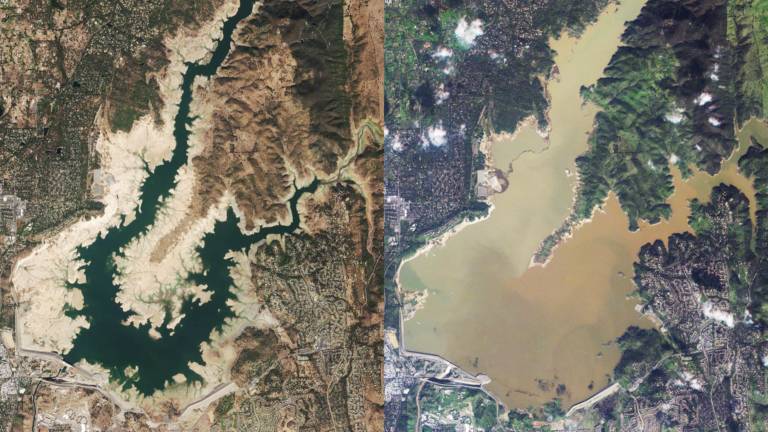
From late December through early January California has been getting pummeled by winter storms in the form of atmospheric rivers. This month long parade of storms has significantly helped the historical five-year drought that has been plaguing California, but it doesn’t mean the state is in the clear.
“Early in the January storm cycle, lower mountain elevations received some rain, but the vast majority of the mountain precipitation has come as snow — which is exactly the way we need this precipitation. As snow, it releases to reservoirs and ecosystems more gradually and efficiently over the summer months.”
–Thomas Painter, snow scientist at NASA

During the drought years from 2012 through 2016 the state of California experienced a snow-water deficit of about 10.8-million acre feet per year. This amounted to a total deficit of 54-million acre feet through the entire drought. Now, from the atmospheric river cycles which occurred in just under a month, that snow water deficit has been reduced by 37 percent.
“The concern moving forward relates to what happens with the weather for the rest of the winter. Reservoirs across the Sierra foothills are now relatively full. If we get another intense atmospheric river with warmer air temperatures, that could lead to melting of the snowpack, and the risk for rain-induced flooding is considerable.”
–Molotch, Direct of the Center for Water Earth Science and Technology

With more winter storms on the way and the the possibility of more atmospheric rivers brings a new problem to the table. The serious risk of flooding is now a possibility as reservoirs are reaching max capacity. With very limited space in the reservoirs and absorption into underground aquifers being very slow, any new rain water or melt-off could potentially cause flooding.
The two most recent and strongest storm cycles across the Sierras has brought 17.5-million acre feet of water to these mountains, which is 120 percent of the normal snowfall seen in this region. This is great news so long as the snow melts slowly and is absorbed into the earth and underground aquifers where it is most needed, but with any more storms which are as intense as this months comes the potential to cause some serious mayhem.